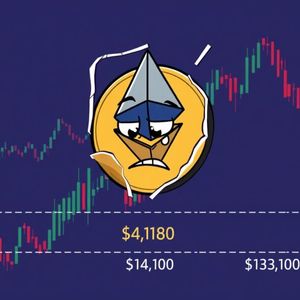Germany just blew another chance to pull itself out of the ditch. On Friday, new economic data from Destatis showed rising inflation, surging unemployment, and no sign of recovery in sight, as the country braces for the full blowback from Donald Trump’s latest trade squeeze. The inflation rate climbed to 2.1% in August, beating forecasts that had it landing at 2%. That’s a sharp move up from July’s 1.8%, which had been cooler than expected. But core inflation, the figure without energy and food, didn’t budge. It stayed at 2.7%, the same as last month. That means pressure is building across every part of the economy, not just from groceries or gas prices. That wasn’t the only red flag. Jobless numbers jumped hard. 3.025 million people were officially unemployed in Germany last month. That pushed the unemployment rate to 6.4%, a clear sign the labor market is getting softer by the day. U.S. tariffs tighten the screws on exports Germany’s slowdown is also getting hammered by global politics. A July trade deal between the EU and the U.S. brought in a new 15% tariff on a wide set of European products shipped to the U.S. What caught businesses off guard was a fresh update earlier this month: those tariffs will now extend to key sectors like pharmaceuticals, which had been left out before. The sudden decision has rattled German exporters, many of whom already operate on thin margins. The big question is who pays. In the U.S., prices are expected to rise. But in Germany and across the eurozone, it’s unclear. Some companies may cut prices to unload extra goods that aren’t selling in America. Others might raise prices in Europe to make up for what they’re losing in the U.S. Either way, the hit lands hard at home. The timing couldn’t be worse. Germany’s GDP grew 0.3% in the first quarter. Then it shrank 0.3% in the second. That’s not growth, that’s stalling. The country’s been flirting with recession for months, and the latest numbers show it’s not getting any better. Carsten Brzeski, ING’s global head of macro, said in a note that “it remains to be seen how European and US companies will react to US tariffs.” He warned that inflation in Germany might hold off the ECB from cutting rates next month. “A rather domestic theme will be the cooling of the German labour market, which should take away wage pressures and consequently inflationary pressures,” Carsten added. ECB holds fire while consumer forecasts stay above target The European Central Bank is caught in the middle. It held rates steady at 2% in July and isn’t expected to move when it meets again on September 11. That’s despite rising signs that Germany and other eurozone economies are getting slammed by trade fallout and weak demand. Consumers in the eurozone aren’t expecting relief anytime soon either. The ECB’s latest Consumer Expectations Survey, also released Friday, showed people still think inflation will stay above the ECB’s target. Over the next 12 months, the median forecast stayed at 2.6%, the same as June. Even three years out, expectations rose to 2.5% from 2.4%. And five years from now? Still stuck at 2.1%, unchanged for eight straight months. That leaves the ECB with no clear path. It wants to bring inflation back to 2%, which it officially targets “over an undefined medium term,” believed to be around three years. But right now, with inflation stuck and trade tensions growing, that target looks more like wishful thinking than a real plan. For now, the Sick Man of Europe isn’t limping toward recovery, he’s face down on the pavement, and no one’s stopping to help. Sign up to Bybit and start trading with $30,050 in welcome gifts














